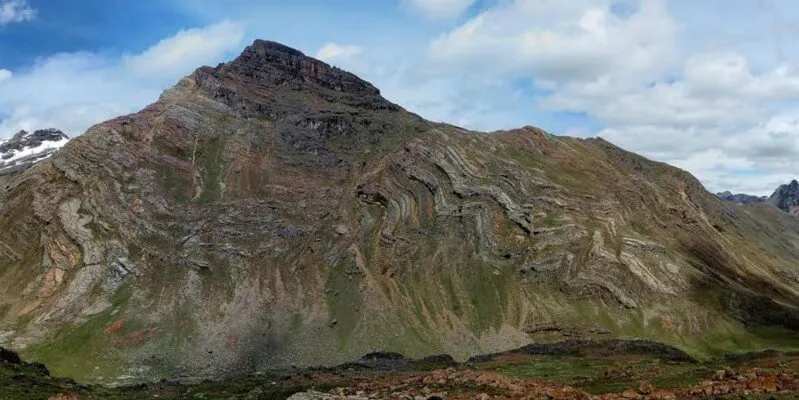Professor of Geology Keith Klepeis of the University of Vermont and Associate Professor of Earth and Space Sciences Katharine Huntington of the University of Washington recently completed a biennial vision statement for the Division of Earth Sciences of the National Science Foundation describing new challenges and opportunities in the field of tectonics.
Their report Challenges & Opportunities for Research in Tectonics: understanding deformation & the processes that link earth system from geologic to human time will serve as a roadmap to funding priorities by NSF for the next decade. The report identifies five “grand challenges” for advances in the field of tectonics; prioritizes the resources and partnerships needed to make progress; and describes a vision to build and strengthen the tectonics community and maximize its educational and societal impacts.
The five areas of challenges identified are:
- Understanding planetary evolution in four dimensions
- Understanding the dynamic interactions among Earth-surface processes and tectonics
- Understanding variations in rheology throughout the lithosphere
- Understanding fault zone behavior from Earth’s surface to the base of the lithosphere meeting societal needs while advancing research in structural geology and plate tectonics
- Meeting societal needs while advancing research in structural geology and tectonics
“Most people understand tectonics as the science behind the Earth’s crust, but it’s much bigger than that,” explains Klepeis. “The field encompasses all the layers of the planet, from the core to the atmosphere, other bodies in our solar system, and how all these layers interact with each other on time scales lasting from milliseconds to billions of years.”
As co-members of the writing committee for the report, Huntington and Klepeis were charged with developing a tectonics community document that encompasses this wide range of research and identifying ways it can be used to solve problems that impact society. The report’s executive summary notes that many products of dynamic tectonic systems—from earthquakes, volcanic eruptions, tsunamis, and landslides to water, mineral and energy resources—have important human consequences.
“We took this responsibility very seriously, because work in tectonics impacts society, industry, and research on such a wide spectrum,” Huntington said. “We knew we needed to get this right, so we reached out to as many constituencies as possible in seeking input.”
The document is based on a year and a half of community discussion and data gathering, including contributions of over 90 scientists at a three-day workshop on the Future of Tectonics in Madison, Wisc., in May 2016. Extensive community input was gathered before, during, and after that workshop, including “town hall meetings” at national conferences, online surveys, and focus group discussions.
This prodigious data gathering effort, which took over 18 months to complete, was aided Skype, Google docs, and other technologies in their infancy when the last NSF decennial assessment was completed. These same data tools have also transformed the way scientists conduct research and disseminate findings.
“Over the last decade there’s been a sea change in how we do science and share results,” Huntington said. “Today there are a wide variety of databases, many of them publicly accessible online, that give us many more opportunities for learning and sharing.”
Huntington and Klepeis sought opinions not just from academics but from a wide range of public school educators, researchers, and industry scientists.
“Academics and scientists in private industry actually have a lot of things they can learn from each other,” said Klepeis. “The more we learn to share resources and collaborate, the faster we can make progress on problems that have real-world impacts, like being able to more accurately predict earthquakes, or mitigate the effects of climate change.”
The final report is available at: https://sgtfuturedirections.files.wordpress.com/2017/09/tectonics2017_forcommentlowres.pdf
